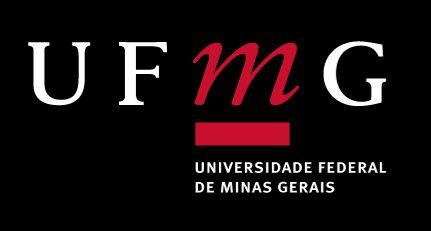The impact of decanalization and restoration of fluvial systems in urban microclimate
case study of Ribeirão Arrudas, Belo Horizonte (MG)
DOI:
https://doi.org/10.35699/2237-549X.2020.21391Keywords:
daylighting streams, urban microclimate, Ribeirão ArrudasAbstract
The city of Belo Horizonte has an expressive hydrographic network that has been lost in the urban landscape due to the constant efforts of the authorities to channel and cover the city's rivers over time. However, new trends in urban planning that integrate rivers to the landscape are gaining strength in the world. In this context, this study aimed to analyze the different impacts that the daylighting of a river can bring to the urban microclimate, using Ribeirão Arrudas as the object of the study. To establish a comparative scenario, two meteorological shelters were installed along its course, one in an area where the river is uncovered and close to its natural state and the other one in a channeled and covered area of it. With the collection of primary data from shelters plus official data from three meteorological stations operated by INMET, it was possible to observe that environments with uncovered aquatic surfaces and with vegetated margins have, on average, a lower temperature of about 2°C and a relative humidity almost 4% higher, in addition to a more intense ventilation. These variations, taken together, can more easily provide a condition of thermal comfort, which helps in the well-being state of the population of urban centers.
Downloads
References
ALVARES, C. A.; STAPE, J. L.; SENTELHAS, P. C.; GONÇALVES, J. L. M.; SPAROVEKET, G. Köppen's climate classification map for Brazil. Meteorologische Zeitschrift, v. 22, n. 6, p.711-728, 1 dez. 2013. Schweizerbart.
ASSIS, W. L. O sistema clima urbano do município de Belo Horizonte na perspectiva têmporo-espacial. 2010. 299 f. Tese (Doutorado) - Curso de Geografia, Instituto de Geociências, Universidade Federal de Minas Gerais, Belo Horizonte, 2010. BORSAGLI, A. Rios Invisíveis da Metrópole Mineira. Belo Horizonte: Clube de Autores, 2016. 430 p. BORSAGLI, A.; BERNARDES, B. O Ribeirão Arrudas em Belo Horizonte: de elemento integrador e indutor da ocupação urbana para obstáculo no desenvolvimento da urbe mineira. Cadernos Proarq, Rio de Janeiro, p.86-102, dez. 2015. CAJAZEIRO, J. M. D. Análise da susceptibilidade à formação de inundações nas bacias e áreas de contribuição do Ribeirão Arrudas e Córrego da Onça em termos de índices morfométricos e impermeabilização. 2012. 101 f. Dissertação (Mestrado) - Curso de Geografia, Departamento de Geografia, Universidade Federal de Minas Gerais, Belo Horizonte, 2012. CBH VELHAS. Plano Diretor de Recursos Hídricos: Unidade Territorial Estratégica Ribeirão Arrudas. Belo Horizonte, 2016. 12 p. CPRM (Companhia de Pesquisa de Recursos Minerais) - Serviço Geológico do Brasil. 2004. Disponível em: < http://siga.cbhvelhas.org.br/portal/sigaweb.zul>. Acesso em: 12 out. 2019. FERREIRA, D. G.; ASSIS, E. S.; KATZSCHNER, L. Construção de um mapa climático analítico para a cidade de Belo Horizonte, Brasil. urbe. Revista Brasileira de Gestão Urbana, v. 9, n. suppl 1, p. 255–270, out. 2017. GARTLAND, L. Ilhas de calor: como mitigar zonas de calor em áreas urbanas. São Paulo: Oficina de Textos, 2010. 248 p. HEIJS, Jan; YOUNG, Damian. Bringing Light to the Water: stream daylighting in the Auckland region and beyond. In: WATER NEW ZEALAND STORMWATER CONFERENCE, 2012. MACHADO, A. J.; AZEVEDO, T. R. Parametrização da emissão termoradiativa aplicada à análise do conforto urbano. GEOUSP – Espaço e Tempo, São Paulo, n.19, p.179-198. 2006.
MENDONÇA, F.; DANNI-OLIVEIRA, I. M. Climatologia: noções básicas e climas do Brasil. São Paulo: Oficina de Texto, 2007. 206 p.
MONTEIRO, C. A. F. Análise rítmica em climatologia; problemas da atualidade climática em São Paulo e achegas para um programa de trabalho. São Paulo, Série Climatologia Dinâmica I, USP-IG, 1971, 21p.
NUNEZ, M; OKE, T. R. The energy balance of an urban canyon. Applied Meteorology, v.16, p.11-19. Jan. 1977.
OLIVEIRA, M. T. de. Estudo de movimentos de massa gravitacionais no município de Belo Horizonte, MG. 2009. 279 f. Tese (Doutorado) - Curso de Engenharia Civil, Universidade Federal de Viçosa, Viçosa, 2009.
OKE, T. R. Canyon geometry and the nocturnal urban heat island: comparison of scale and field observations. Journal of Climatology, v.1, p.237-254, 1981.
PBH. Plano Municipal de Saneamento de Belo Horizonte 2016/2019. Belo Horizonte, 2016.358 p.
SEZERINO, M. L; MONTEIRO, C. A. F. O campo térmico da cidade de Florianópolis; primeiros experimentos. GEOSUL, Florianópolis, v.5, n.9, p.20-60. 1990.
SILVA, A. J.; NASCIMENTO, C. R. C.; SILVA, L. F.; LUCAS, T. P. B. Análise topoclimática em unidade de conservação urbana a partir da temperatura e umidade relativa do ar. E-SCIENTIA, v. 4, p. 2, 2011.
STEWART, I. D.; OKE, T. R. Local climate zones for urban temperature studies. Bulletin of the American Meteorological Society, v. 93, n. 12, p. 1879–1900, 2012.
THORNTHWAITE, C. W.; MATHER, J. R. The water balance. Publication in Climatology, Laboratory of Climatology, Centerton, v. 8, n.1. 1955.
YAP, D; OKE, T. R. Sensible heat fluxes over an urban area: Vancouver, B.C. Journal of Applied Meteorology, v.13, p.880-890, dez. 1974.
Downloads
Published
Versions
- 2022-03-31 (2)
- 2020-08-11 (1)
How to Cite
Issue
Section
License
Copyright (c) 2020 Amanda Granha Magalhães Gomes e Silva, Wellington Lopes Assis

This work is licensed under a Creative Commons Attribution 4.0 International License.
Os artigos desta revista obedecem a licença Creative Commons — Attribution 4.0 International — CC BY 4.0









